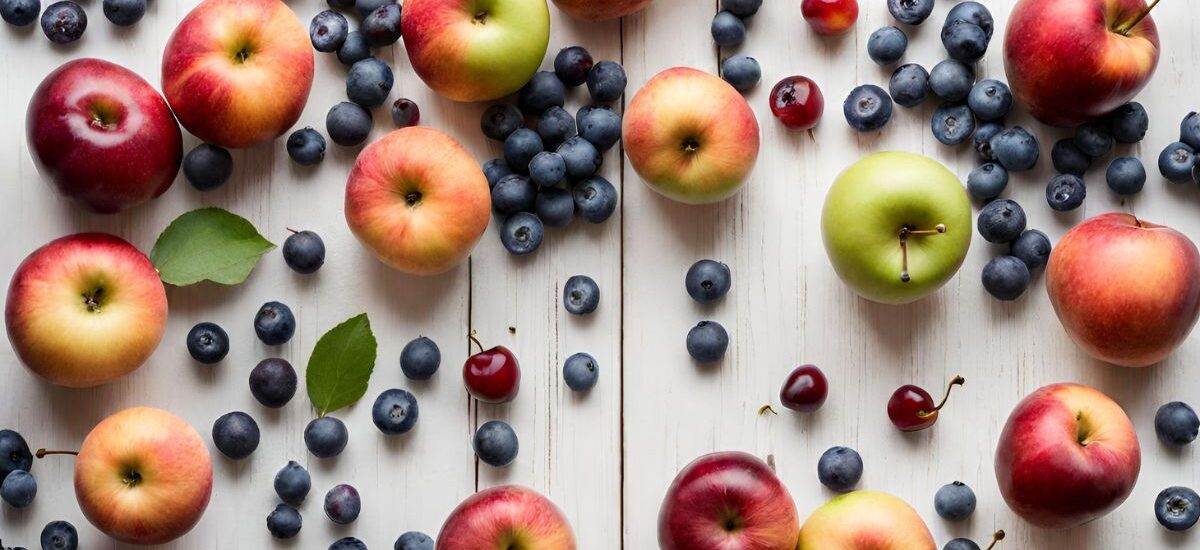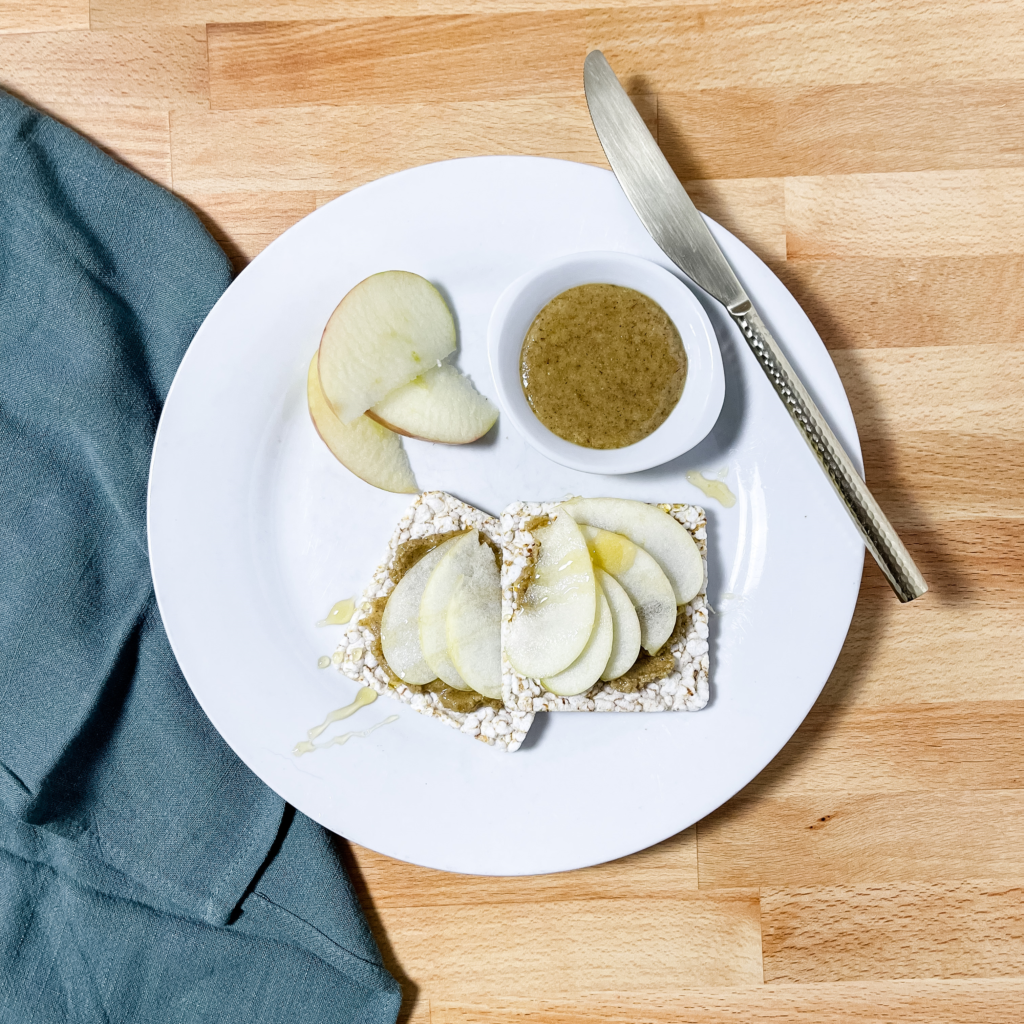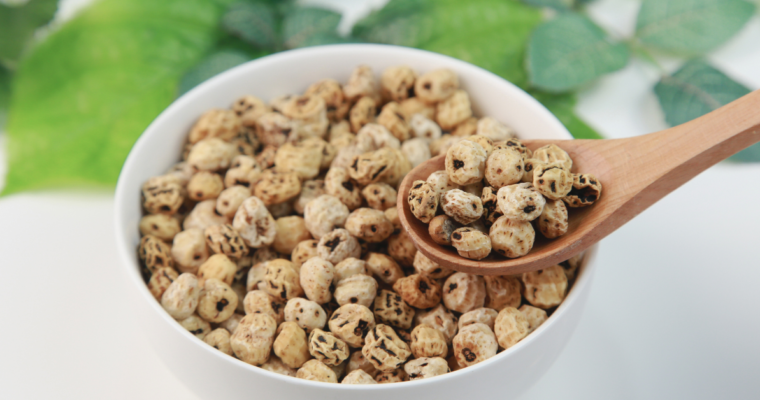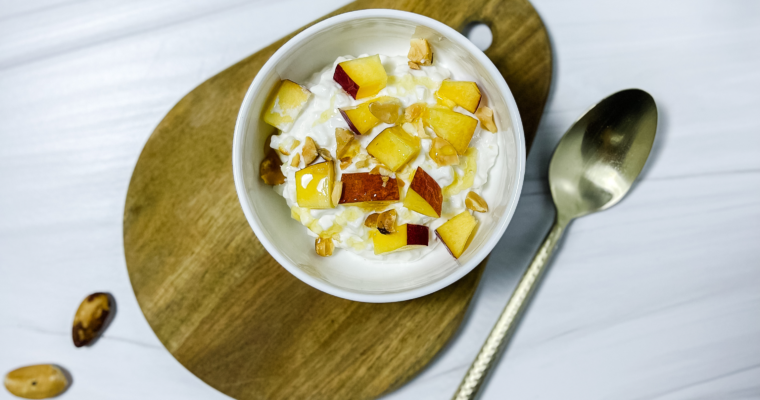Adopting a low histamine diet often means reevaluating your fruit basket. There are some beloved fruits that are off-limits on a low histamine diet, such as citrus, bananas, and strawberries. However, there are still plenty of low histamine fruits that can be enjoyed. Who knows? Among these, you might just discover a new favorite.
In this guide, we’ll explore the wide variety of fruits that you can still enjoy, even with histamine intolerance. We’ll not only list these fruits but also dive into the best fruit preservation methods, whether fresh, frozen, canned, dried, or freeze-dried. Understanding how to choose and prepare these fruits can make all the difference in maintaining a balanced, enjoyable, and symptom-free diet.
Low Histamine Fruits
You can find all these fruits on the “TLH YES List”. These are fruits that are compatible with people who have a histamine intolerance. They include fruits with a SIGHI of 0 and are generally agreed upon in the other reputable lists.
- Apple
- Apricot
- Blackberry
- Blueberry
- Cantaloupe
- Cherry
- Coconut
- Cranberry
- Dragon Fruit
- Goji Berry
- Gooseberry
- Honeydew
- Lychee
- Melons (except watermelons)
- Nectarine
- Peach
- Persimmon
- Pomegranate
- Star Fruit
As with all the guidance I provide on this blog about which foods are a YES, NO, and MAYBE for a low histamine diet, I rely on the Swiss Interest Group Histamine Intolerance (SIGHI) histamine food compatibility list. This list is a trusted and respected resource, frequently cited by numerous other histamine food lists.
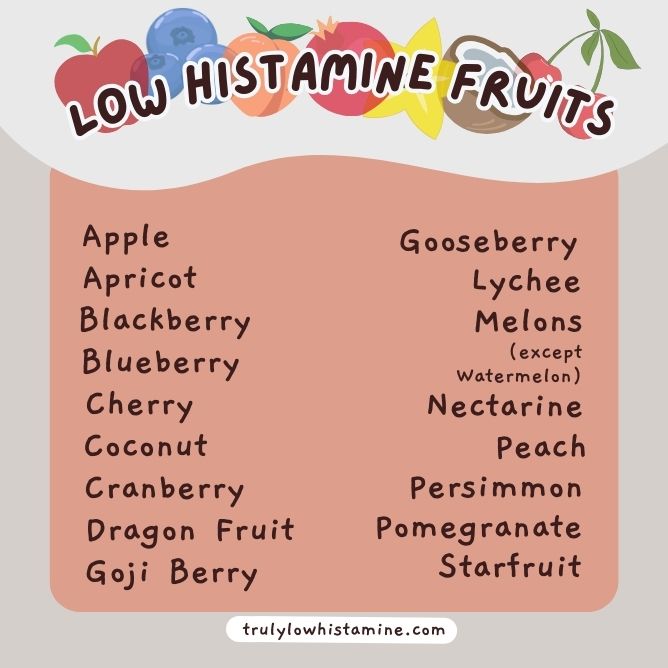
Maybe Fruits
The fruits, found on the “TLH MAYBE” list, are moderately compatible with people who have histamine intolerance. These are fruits with SIGHI of 1. Sometimes, enjoying these fruits in small, infrequent amounts can be tolerated. You might notice mild symptoms, or perhaps none at all. It’s really about personal testing—take it slow and see how your body responds to each fruit to determine what you can comfortably tolerate. If you find that you can tolerate a particular fruit, you can then include it in your “YES” list.
Fruits with an “*” – When a fruit has a SIGHI value of 0 but other lists overwhelmingly disagree about its compatibility, I will mark it with an asterisk (*). While SIGHI deems these items compatible with a low histamine diet, I have categorized them under the MAYBE list for you to personally test their suitability.
- Boysenberry*
- Dates*
- Figs
- Grapes*
- Mango
- Pear
- Plum
- Prune
- Rhubarb
- Rose Hips
- Watermelon
High Histamine Fruits
These fruits, found on the “TLH NO” list, are incompatible with people who have histamine intolerance (SIGHI 2 and 3). They include fruits that are high in histamine, those that encourage histamine release, and even some known as DAO blockers, which interfere with our body’s ability to break down histamine. Typically, eating these fruits regularly can lead to noticeable discomfort and are often poorly tolerated, potentially causing severe symptoms.
- Avacado
- Banana
- Citrus
- Guava
- Kiwi
- Papaya
- Pineapple
- Raspberry
- Strawberry
Best Fruit Preservation Methods
Fresh – YES
As food ages, Histamine levels in food can increase over time due to a combination of bacterial activity and enzymatic processes. Generally speaking, the fresher the food, the lower its histamine content will be.
Frozen – YES
Freezing foods slows down enzyme activity and keeps bacterial growth in check, which helps prevent the buildup of new histamine. By freezing, you essentially lock in the histamine levels that were present at the time of freezing, stopping any further increases. Hence, fruit that was low in histamine when frozen remains a great option for your diet
Canned – MAYBE
Canned foods often contain higher levels of histamine compared to their fresh counterparts. This increase is due to the heating process used in canning, which can enhance the activity of natural enzymes in fruits that contribute to histamine production. However, it’s worth noting that canning also slows down bacterial spoilage, which, in turn, can help control further histamine formation over time.
If the fruit is low in histamine to begin with, once canned, it may still retain a low enough histamine level to be well tolerated. According to SIGHI, certain low histamine canned fruits are indeed well tolerated. To find out if a particular food works for you, you will need to test your tolerance. If you discover that you tolerate it well, you can confidently add it to your ‘YES’ list.
Dried – MAYBE
Eating dried fruit on a low histamine diet can be tricky. The process of drying can concentrate not only the natural sugars and flavors but also the histamine levels in the fruit. Additionally, dried fruits sometimes contain preservatives like sulfites and other additives, which can exacerbate histamine responses or trigger similar symptoms. When eating dried fruits, opt for fruits that are initially low in histamine and without any added preservatives.
To find out if a particular dried fruit works for you, you will need to test your tolerance. If you discover that you tolerate it well, you can confidently add it to your ‘YES’ list.
Freeze-Dried – MAYBE
Freeze drying is more effective at keeping histamine levels in check compared to traditional drying methods. Freeze drying works by first freezing the fruits and then removing water from fruits under low temperatures and pressure, which preserves the fruit in a lightweight, nutrient-dense form without using high heat or potentially harmful additives. This method minimally affects the natural enzymes and doesn’t promote histamine formation during the preservation process as much as heat-drying or canning might.
When eating freeze-dried fruits, start with fruits that are naturally low in histamine and that don’t contain additional preservatives.
As with any MAYBE foods, introduce freeze-dried fruits slowly and in small amounts to see how your body reacts before incorporating them regularly into your diet.
Recipes Featuring Low Histamine Fruit
Got a low histamine fruit and you are looking for a recipe for it. Check out some Truly Low Histamine recipes below.

